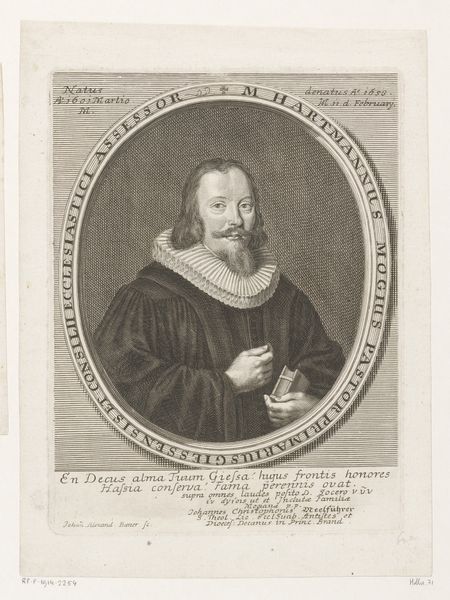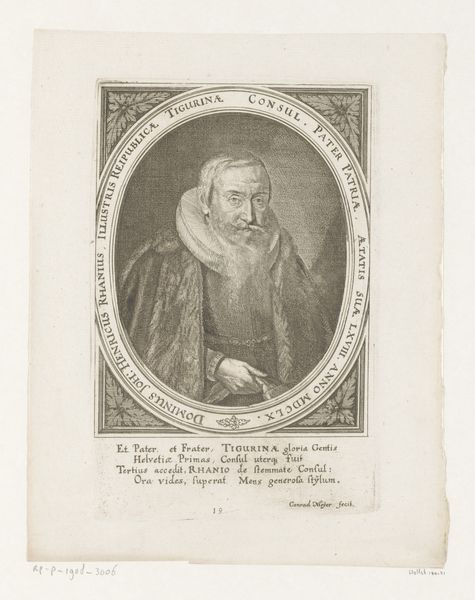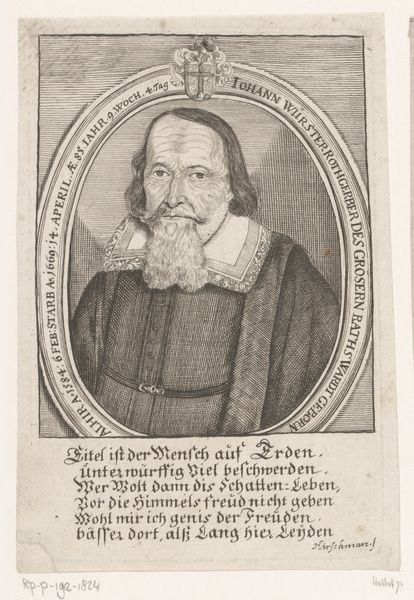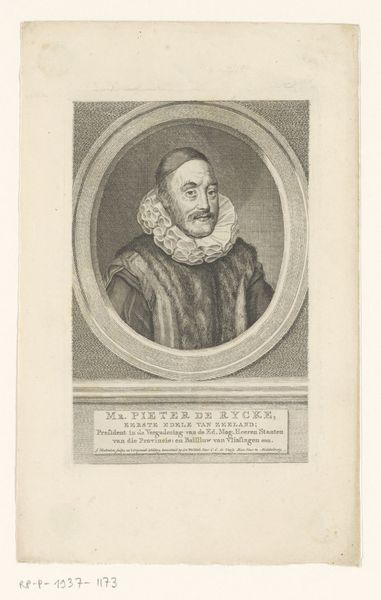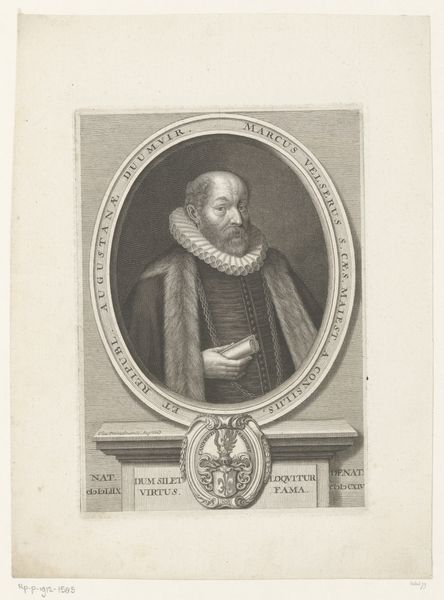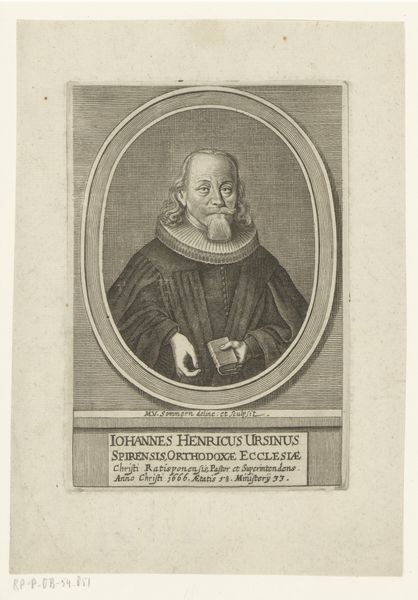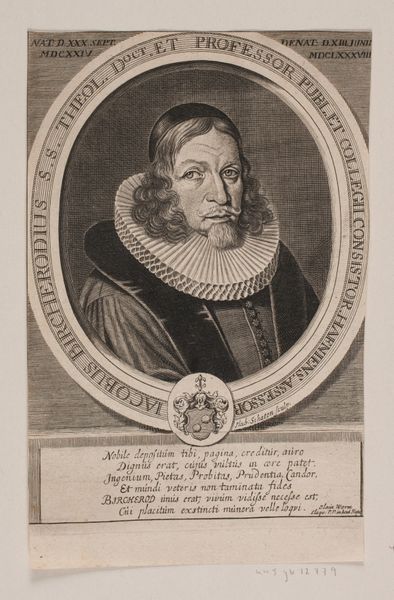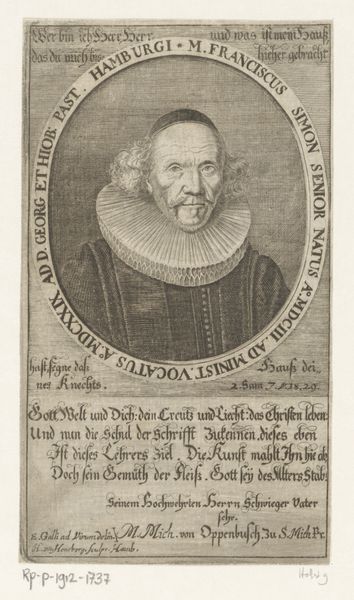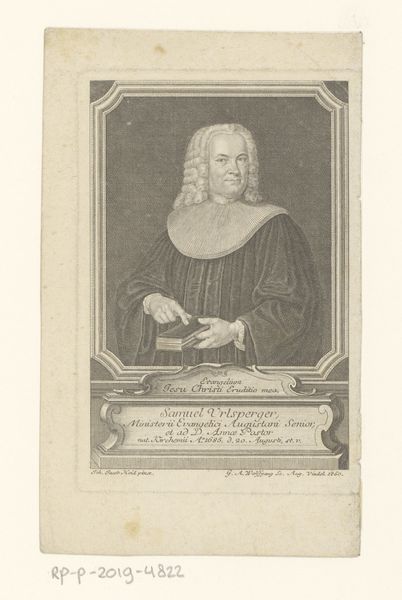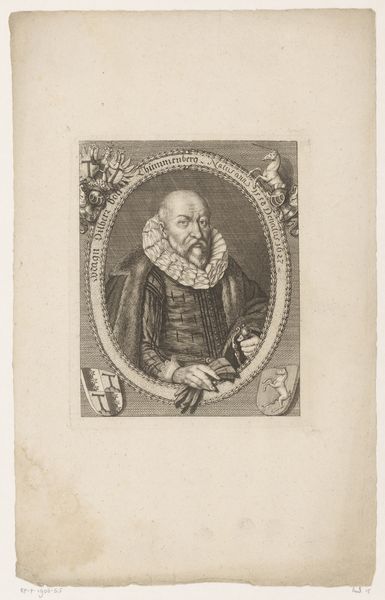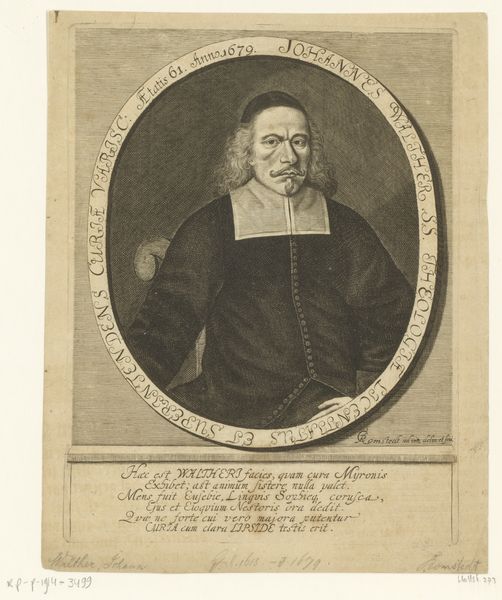
print, engraving
#
portrait
#
aged paper
#
toned paper
#
baroque
# print
#
old engraving style
#
engraving
Dimensions: height 148 mm, width 102 mm
Copyright: Rijks Museum: Open Domain
Gerard de Groos made this portrait of Johannus Marcus Marci using etching, a printmaking technique dating back to the early 16th century. The process begins by coating a metal plate, often copper or zinc, with a waxy, acid-resistant substance known as the ground. The artist then uses a sharp needle to draw an image into the ground, exposing the metal beneath. The plate is then immersed in acid, which bites into the exposed lines, creating grooves. The longer the plate remains in the acid, the deeper the lines become, allowing for a darker impression when printed. Once the etching is complete, ink is applied to the plate and then wiped off the surface, leaving ink only in the etched lines. Damp paper is then placed on the plate, and both are run through a press. The pressure forces the paper into the inked grooves, transferring the image. The social significance lies in how it democratized image-making. Unlike painting, which was exclusive, etching allowed for the mass production of images, making art more accessible to a wider audience and creating a visual record of the times. It also provided employment for engravers, printers, and publishers, contributing to the growth of the graphic arts industry.
Comments
No comments
Be the first to comment and join the conversation on the ultimate creative platform.
